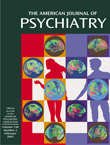This edited textbook covers a variety of approaches to consultation-liaison psychiatry. The premise of what constitutes consultation liaison is well developed in the beginning portions of the book, followed by presentations of specific components of practice venues. It is helpful to learn that the concepts for this approach to medical care came from ideas developed during World War II, much as modern neurosurgery sprang from the experiences of World War I.
The book begins slowly, dealing with the more tedious and laborious aspects of consultation-liaison psychiatry. The pace quickens as the book proceeds more into the actual work. The second half of the book becomes more engrossing. There are some conflicting opinions and a fair amount of repetition, some probably unavoidable. Although annoying at times when the book is read in its entirety, repetition makes the book more accessible when used as a reference work alone. The most effective sections are the sections on oncology, ECT, and psychotherapy. The oncology section contains particularly useful information such as the fact that “suicide is rare among patients with cancer.” Other aspects of cancer treatment, including working with family and staff, are well addressed. ECT remains controversial in the public’s eye. The authors offer an informed, balanced overview with aggressive recommendations for the use of ECT in such conditions as Parkinson’s disease, dementia, and epilepsy. The psychotherapy chapter is positively splendid, a thoughtful, convincing treatise. All beginning psychiatrists would benefit from reading it. Highest compliments are due its author. The neurology and neurosurgery and physical medicine and rehabilitation chapters are also well written.
There seems to be little doubt that the theoretical construct of consultation-liaison psychiatry offers a rich and fulfilling field. It is an area in which psychiatrists work as “real doctors.” The problems include how to train psychiatric physicians broadly enough, how to attract medical students into such an ambiguous area, how to be aggressive enough to be asked to participate, how not to threaten the autonomy of our colleagues, and how to get paid for it. What does the consultant do if he or she disagrees with the care offered? Can the psychiatrist as primary care physician use other specialties successfully as consultation-liaison physicians? Using 70 authors in a well-coordinated, well-edited fashion, the editors have created quite helpful information as to how to approach these important questions. There remains much more to be done. This is a good body of work to build on.

